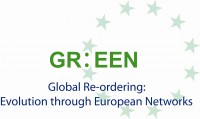Constructing a Transnational Timber Legality Assurance Regime: Architecture, Accomplishments, Challenges

The emerging transnational timber legality assurance regime comprises a set of interrelated policy instruments, both public and private, aimed at controlling trade in illegally logged wood and wood products. The potentially productive interactions among these instruments in the emerging forestry regime create prospects for engendering learning, stimulating cross-fertilization, and enhancing accountability. In this article, we analyze the EU’s Forest Law Enforcement Governance and Trade (FLEGT) initiative, interacting with public legal timber regulations and private legality verification and sustainability certification schemes, as the core of an emerging transnational experimentalist regime. An experimentalist regime of this type may provide a promising approach to addressing contentious transnational environmental issues like forest governance where there is no global hegemon to impose a single set of rules. However, experience with FLEGT implementation suggests that there are also a number of outstanding challenges to constructing an effective timber legality assurance regime, which if unresolved could undermine its promise. The argument proceeds in three steps, based on an extensive analysis of recent developments. First, we outline the architecture and promise of the emerging timber legality assurance regime. Then, we review key accomplishments to date. Finally, we examine the ongoing challenges facing this innovative regime as it moves forward, and consider how they might be overcome through the adoption of a more consistently experimentalist approach.



